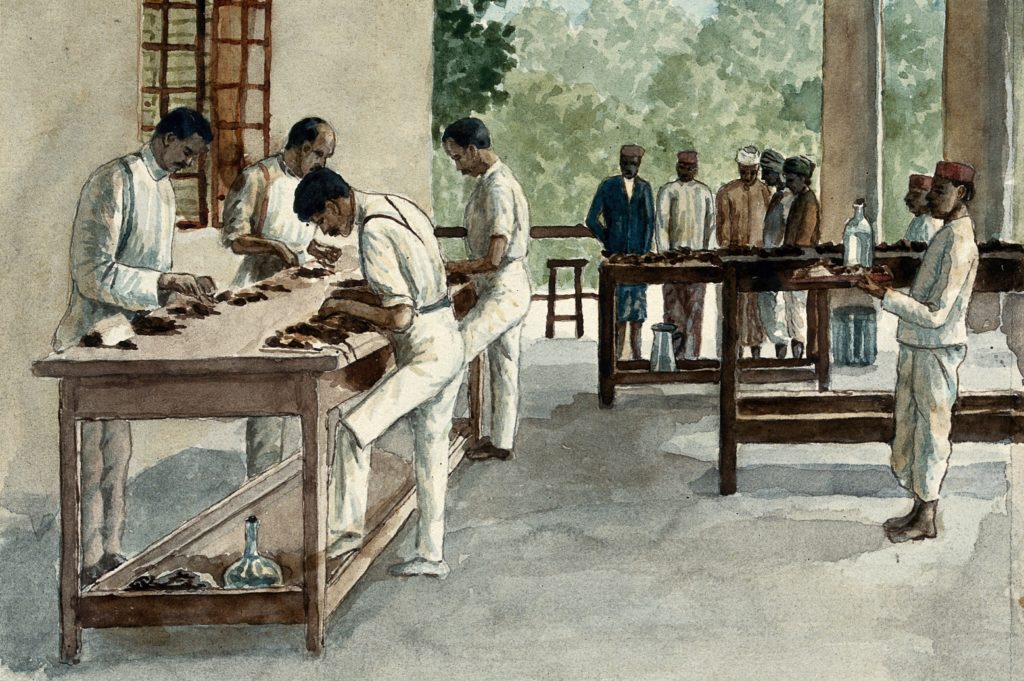
I’ve been writing this from April to July 2020, when the world is in the midst of the COVID-19 pandemic.
Amidst all of the fears and frustrations and disruptions of the everyday, I’ve been finding some comfort in the art and visual culture that came out of previous pandemics and epidemics from history. The Black Death used to feel like a distant historical curiosity; now, I can start to understand even a little bit of what the atmosphere might have been like.
Below, I want to take you through the diverse, beautiful, interesting, and, unfortunately, relatable art history of seven of the deadliest pandemics and epidemics throughout history, from the 100s to present day. I hope it brings some perspective or enjoyment during the strange times we’re in.
165–180: Antonine Plague. Killed ca. 5 million.

I’m going in consecutive order here, so let’s start with the earliest large-scale outbreak I could find: the Antonine plague. This one took place in the ancient Roman Empire and possibly also Eastern Han China. It’s estimated to have killed around five million people, completely devastated the army, and might even have killed a Roman Emperor or two (Lucius Verus and Marcus Aurelius).
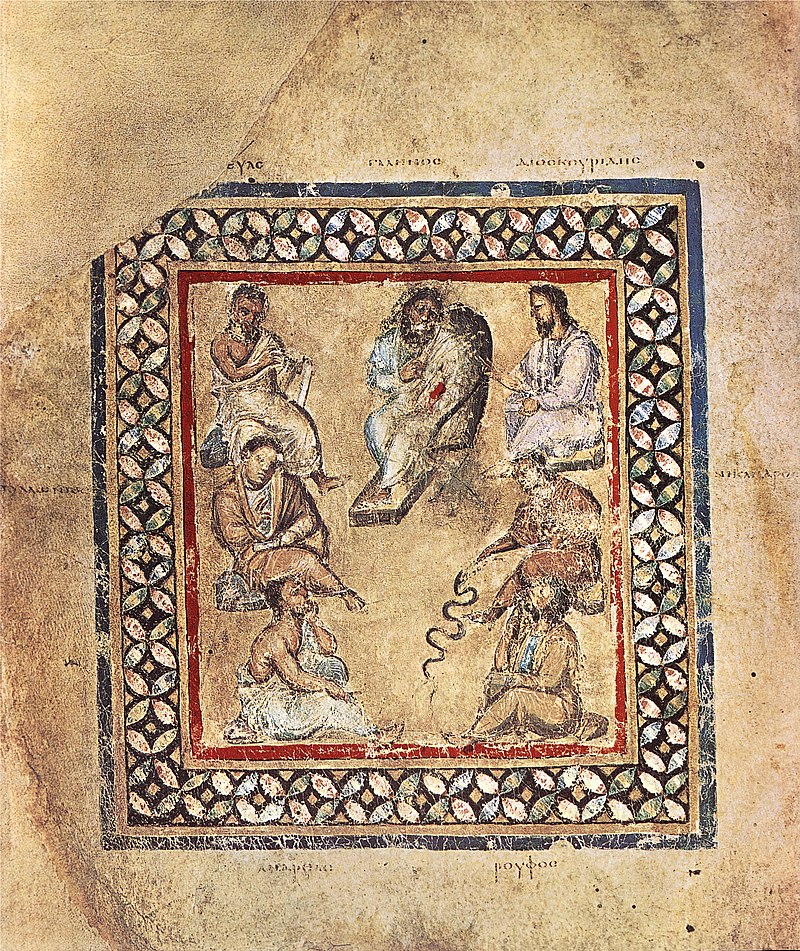
This pandemic is sometimes called the Plague of Galen after the famous physician Galen, who is depicted in the top centre of the illustration above (made several centuries after the pandemic). He recorded descriptions of the disease, mentioning fever, diarrhea, sore throat, and skin eruptions on the ninth day of the illness. Based on his observations, scholars have speculated that the disease could have been smallpox or measles. Other evidence that lends itself to the smallpox theory is apparently depictions of possible smallpox pustules on certain archaeological finds; however, I haven’t been able to find any representations of these to show you.
In fact, one thing that I discovered while researching this article is that there are very few remaining depictions of historical pandemics from the actual periods in which they happened. Many of the images we think depict certain pandemics (especially the Black Death, which we will get to in a bit) are actually depictions of recurring diseases such as smallpox or leprosy. This is why many depictions that I could find of these early pandemics are drawings, prints, and paintings that were made many years after the pandemics happened. The print at the top of this section is a good example, depicting the Antonine plague around 1,700 years after the event.
What we can look at from the time, however, is architecture—not just what was built, but what wasn’t built. Architectural evidence seems to show that there was a halt in civic building projects between 166 and 180, one possible artistic consequence of the pandemic.
735–737: Japanese smallpox epidemic. Killed ca 1 million.
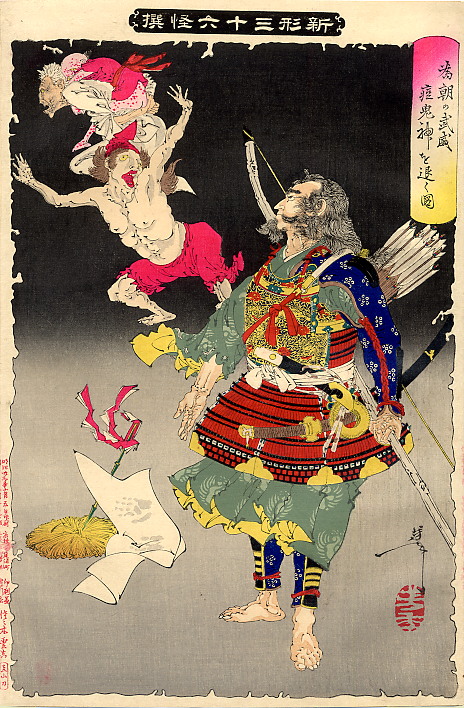
The Japanese smallpox epidemic in the 700s was the first of many recorded smallpox epidemics throughout Japan’s history, and probably killed around a third of the entire population.
The main reason I wanted to include this pandemic is because of the Japanese smallpox demon, which is represented in lots of great prints and drawings. Smallpox was initially thought to be caused by an onryō, a vengeful spirit from Japanese folklore. However, over the centuries, the specific spirit that caused smallpox was eventually given the name hōsōshin, which translates to ‘smallpox god’. This deity caused smallpox rather than offered protection from it.
Traditionally, the hōsōshin was chased away by placing effigies at the boundaries of villages. Families also tried to appease it by building shrines, burning incense, and offering flowers in their homes. The colour red was often associated with smallpox; apparently, the hōsōshin was afraid of this colour, as well as of dogs.

The above print from the nineteenth century illustrates the tale of the legendary figure Chinsei Hachiro Tametomo banishing a hōsōshin from the island Oshima. The demon is so small in this print because it apparently shrunk to the size of a pea in response to his threats and floated out to sea. This story must have reflected some sort of comfort or wishful thinking to communities that had been ravaged by smallpox on and off throughout the centuries.
(By the way, this is not the only smallpox deity around—Ṣọ̀pọ̀na, for example, is the god of smallpox in the Yoruba religion.)
1347–1351: Black Death. Killed ca. 75–200 million.

Arguably the most infamous historical pandemic. This is where I want to point out one of the most surprising things I found while researching this post: there are no depictions of the Black Death—that is, people with the disease itself—painted during the plague, as far as is currently known. According to this academic paper (also explored in this NPR article), most of the images we think depict the Black Death—showing people sick with boils or red marks all over their skin—are actually images of other diseases, such as smallpox or leprosy. It’s true that one symptom of bubonic plague seems to have been buboes in the groin, beck, or armpit, but these wouldn’t have completely covered the body.
Theories of why there are no depictions of the disease itself from the time of the plague include that artists were worried about getting symptoms themselves (sick people were, after all, quarantined), or that people simply didn’t have a good idea of what the disease actually was. It wasn’t until centuries after it ended, when smaller outbreaks popped up over the years, that people started connecting the dots.
What we can see from this time, however, are depictions of the consequences of the Black Death. The image at the top of this section, from 1349, is one of the earliest known images from the plague, showing people in the city of Tournai burying coffins of those who died.

One of the most striking artistic motifs that arose because of the Black Death was the ‘Dance of Death’, or ‘Danse Macabre’. This motif consisted of dancing skeletons, and was an allegory on the universality of death.

As with some of the other pandemics, there are also plenty of artworks depicting the Black Death after it happened. One of my favourite examples draws on the ‘Dance of Death’ motif to evoke the pandemic: The Triumph of Death by Pieter Bruegel from ca. 1562, showing an army of skeleton killing and setting fire to a village:

There are also plenty of depictions of the bubonic plague from later outbreaks. One piece of imagery I wanted to mention is that of the plague doctor figure with a beak-like mask, seen below in a drawing from the 1665 London plague, a famous later outbreak of the bubonic plague that decimated the city. These plague doctor figures are extremely iconic, appearing in popular culture like films and video games.
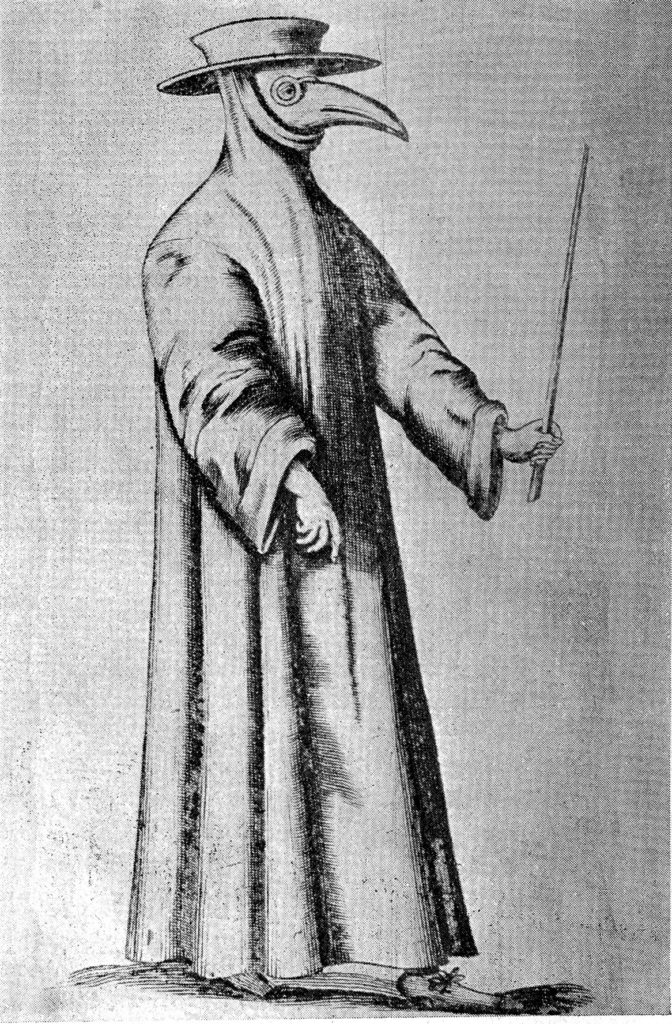
1492–onwards: Americas and Oceania smallpox and other epidemics due to colonisation. Killed at least 56 million.
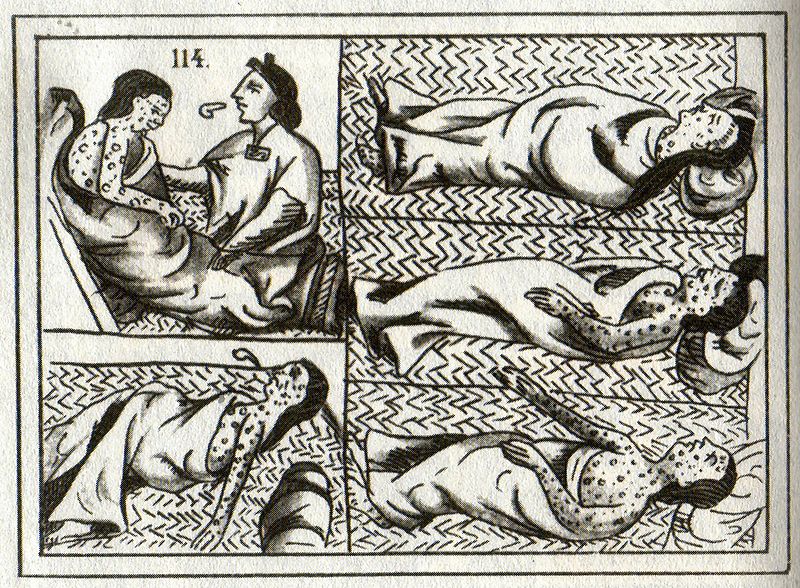
This “pandemic” technically consists of many devastating outbreaks over the course of centuries, all related to one thing: European colonial expansion. Many different diseases were brought by the Europeans to the countries they colonised. I’ll mostly be addressing smallpox here, as it seems to have been one of the most destructive.
The spread of smallpox to indigenous communities has been responsible for the deaths of at least 56 million people. I say “at least” 56 million, because this figure is taken from research on the amount of native Americans who died from smallpox in the Americas. However, it doesn’t include the millions of indigenous people who died of imported epidemics in Australia and other colonised regions.
The Aztec drawings at the top of this section come from the 1500s and depict victims of smallpox amongst the indigenous Mexican population. They were drawn by unknown indigenous artists for the Florentine Codex, a 16th-century ethnographic research study by the Spanish Franciscan friar Bernardino de Sahagún Columbus.
Christopher Columbus arrived in the Americas in 1492, and his expeditions paved the way for Spanish colonisation, with groups of Spanish conquistadors successfully conquering the Mexican Aztec and Peruvian Incan empires. The smallpox virus played an important role in them doing so. Having been exposed to the virus in Europe, the Spanish invaders were largely immune, but the indigenous populations in the Americas were completely vulnerable to the virus. The smallpox epidemic that ravaged the Aztec empire apparently began on the same night that the indigenous population drove the conquistadors out of what is now Mexico City. The many who died from the disease included the Emperor of Mexico. The subsequent decimation of their population due to the epidemic made both conquest and colonisation by the Spanish much easier.
In North America, a notable outbreak from 1616 to 1619 in New England is sometimes referred to as “The Great Dying”. In the Native American communities that it hit, it’s estimated that anywhere between 50 to 90% of the populations died. It’s unclear exactly what the disease was, but it could have been smallpox, bubonic plague, or another imported disease. One research article suggests leptospirosis, caused by rodents from European ships infecting indigenous reservoirs.
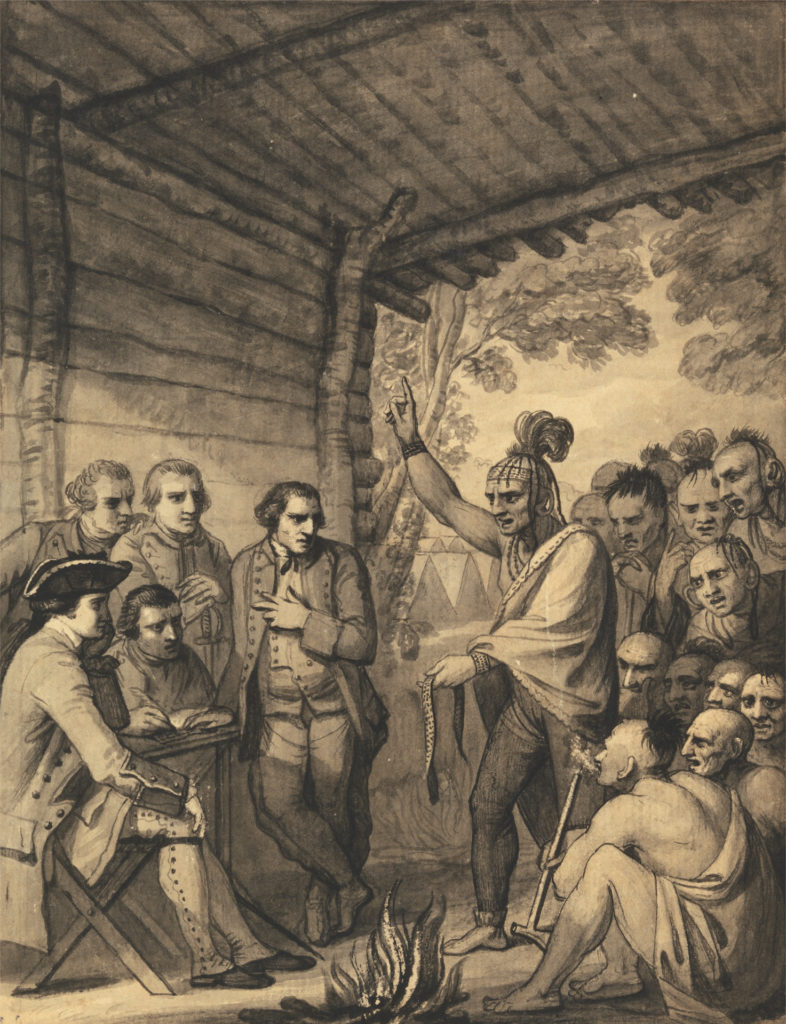
One infamous event was the deliberate spread of smallpox by Europeans in Native American communities through gifting blankets that were infected with the virus. The evidence for this is letters sent during Pontiac’s War in 1763, during which a loose confederation of Native American tribes rose up against the British settlers in their regions. The letters in question were between Jeffery Amherst and Colonel Henry Bouquet in July 1763. In a post-script of one of his letters Bouquet wrote: “P.S. I will try to inocculate [sic] the Indians by means of Blankets that may fall in their hands, taking care however not to get the disease myself.” Amherst responded with approval. Historians disagree on exactly what the results were of this exchange, and whether the orders from Amherst were carried out, but other evidence suggests that, a month before this exchange, “two Blankets and an Handkerchief” were actually taken out of a smallpox hospital at Fort Pitt and delivered to the Native Americans. The full extent of the plans are still unclear, but it seems that some form of biological warfare using smallpox was indeed committed.
The above 1765 engraving by Benjamin West depicted Pontiac’s negotiations with Colonel Bouquet that eventually ended the conflict. It is titled “The Indians Giving a Talk to Colonel Bouquet in a conference at a Council Fire Near his Camp on the Banks of Muskingum in America, in October 1764, 1765”. I’ve seen versions of this print around the Internet with descriptions that may imply he was confronting Bouquet about the smallpox blankets. While this doesn’t seem to be the subject matter, I can understand why it might be interpreted that way, with the obvious outrage on Pontaic’s face and the shocked demeanour of Bouquet.
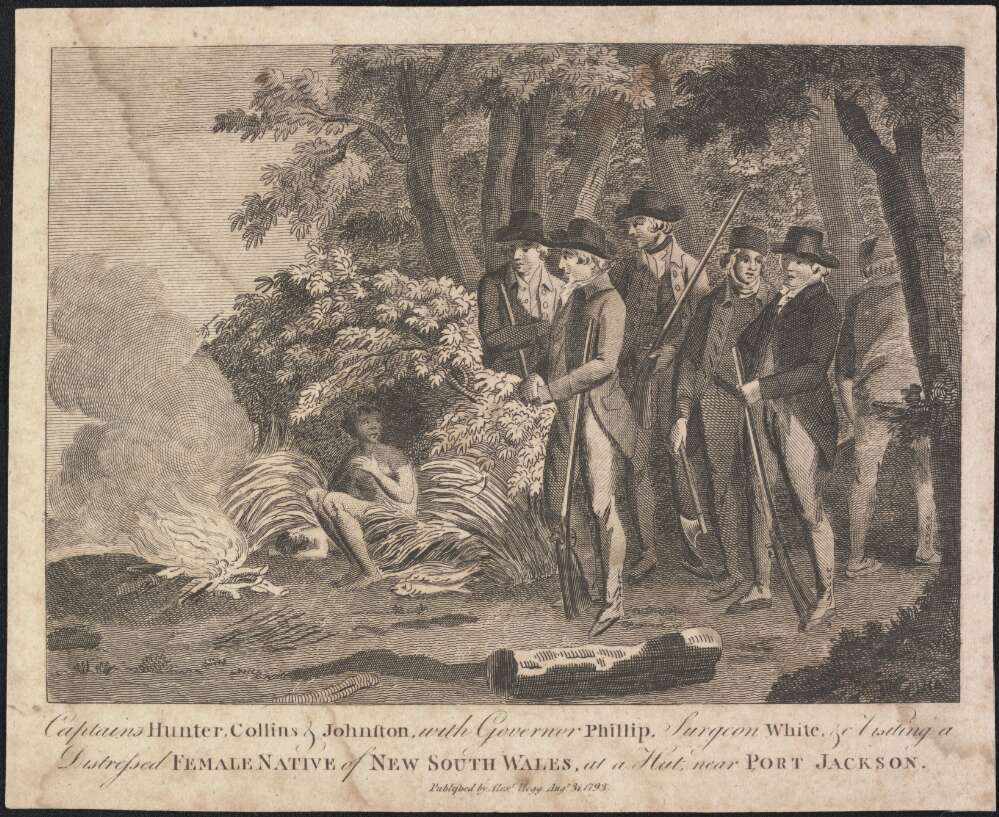
The final epidemic I want to touch on in this section is the smallpox epidemic in Australia that apparently killed up to 70% or even 90% of the nearby indigenous populations.
In April 1789, fifteen months after the First Fleet arrived to establish the first colony in Australia, a major smallpox epidemic broke out in Sydney. While most of the British settlers had a level of immunity to the disease, the indigenous population did not. Apparently, the epidemic was first detected by the Europeans when members of Aboriginal communities were found, according to Newton Fowell, “laying Dead on the Beaches and in the Caverns of Rocks”.
A likely cause of the outbreak was the “variolas matter” brought with Surgeon John White on the First Fleet. This was pus from smallpox victims that he intended to use to create immunity amongst children in the colony. It’s unclear how this “variolas matter” would have spread to the native communities. Some writers have argued that it was a deliberate act of biological warfare.
I have, as you might expect, not found any depictions of this epidemic in art or visual culture. (Apparently, however, Aboriginal Australian traditional songs retold the story of the outbreak afterwards.) The image above shows British soldiers visiting a “distressed” indigenous Australian woman in 1793. While the title indicates that she is in distress, it’s unclear why; this is maybe why some online sources attribute this image to the smallpox outbreak (although I couldn’t find further evidence for this).
However, you might find the below illustrations interesting. These were made in the 1880s, reflecting an outbreak in Melbourne during those years. The imagery in them—from quarantine to border controls—is familiar territory for us during COVID-19:

September 3, 1884. State Library Victoria.

1855–1960: The Third Plague pandemic. Killed more than 12 million.
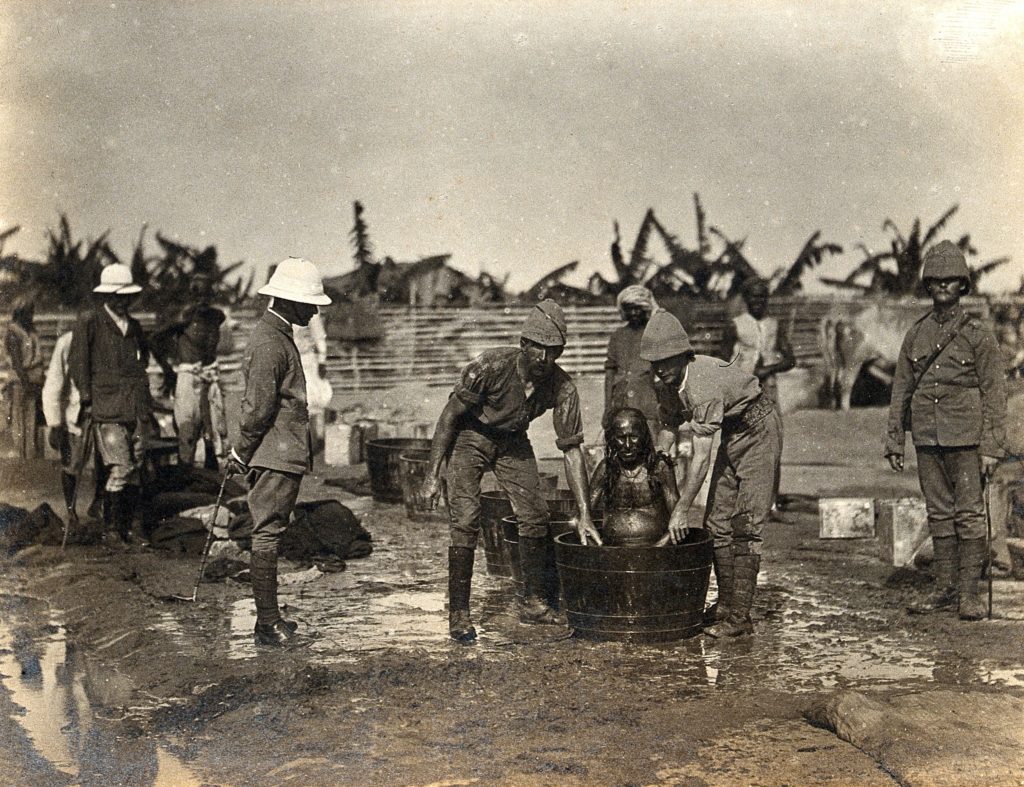
Did you think that the bubonic plague disappeared after the Black Death in medieval Europe? Nope! The last major outbreak happened just over a hundred years ago and didn’t disappear until the 1960s(!). This outbreak is known as the “Third Plague” and started in Yunnan, China, in 1855. It was relatively contained in China until it hit Hong Kong in 1894 (in an outbreak known as the “Hong Kong plague”) and spread to all inhabited continents, as Hong Kong was an international trading port.

In Hong Kong, the pandemic brutally hit Tai Ping Shan, one of the earliest Chinese settlements in Hong Kong established by the British in the 1840s. The houses were tiny and window-less, with multiple generations of a family crammed inside. There was no proper sewage or drainage. It was the perfect environment for an illness to spread. In total, around 2,500 people died from May to September 1894. To try and contain the outbreak, the authorities imposed strict measures including rapid disposal of the dead, isolation of the sick, and disinfection of affected households. Soon after, Tai Ping Shan’s houses were demolished and its residents forcibly evicted in a move that heightened political and racial tensions.
The above medal was given by the Hong Kong authorities to nurses, civil servants, police, and British army and naval personnel who helped during the epidemic. It shows a Chinese man being tended to by a nurse, while a man holds off the angel of death. It highlights the heroic side of how the authorities handled the epidemic, rather than any of the problems I described.
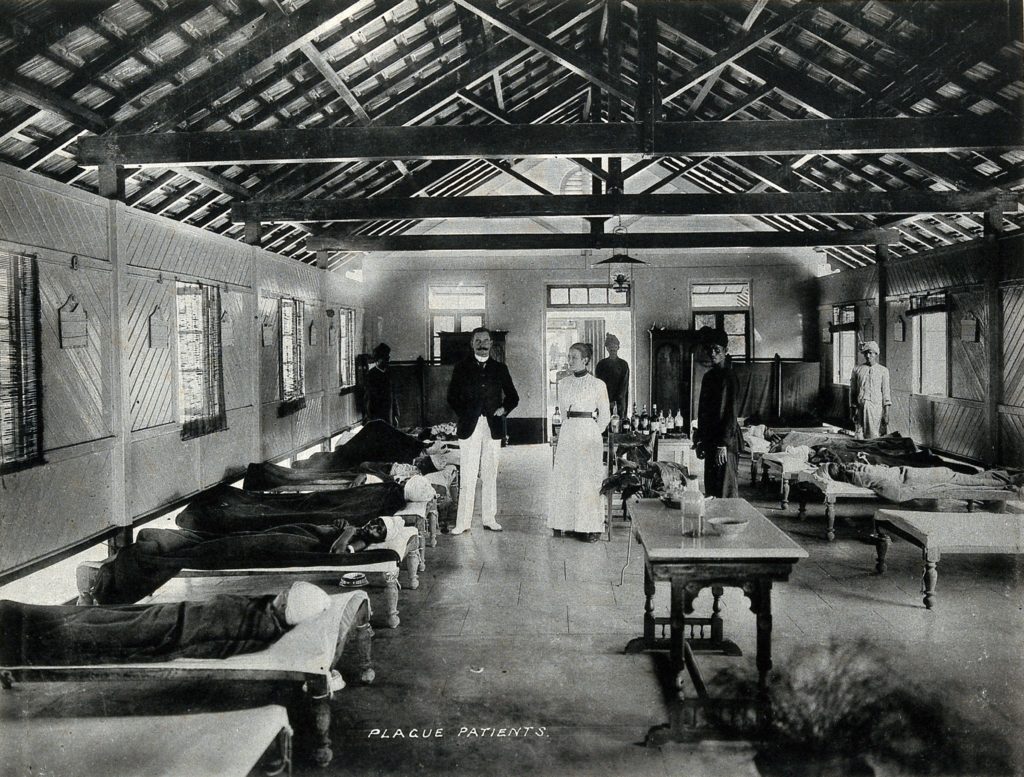
From Hong Kong, the outbreak continued to India in 1896, killing over twelve million people over the next thirty years. It initially affected port cities such as Bombay (in the 1896 Bombay plague), Pune, Calcutta, and Karachi, but spread inland, mainly to northern and western India. The photos I’ve included here show attempts at controlling the plague in Bombay and Karachi in 1896-97, through plague hospitals and segregation camps.
The colonial British government’s attempts at controlling the plague led to protests and riots, as they were considered culturally invasive and offensive. Initially, British search parties burned down and destroyed infected buildings after forcefully evicting the tenants. However, this became impractical, and instead they started destroying the bedding, clothes, and furnishings of the infected, and forcefully sanitising their buildings. When they found the body of a victim, they immediately removed it for incineration. The British government changed course around 1899 in response to widespread protests and resistance, for example by involving more indigenous medicinal methods in their practices.

1918–1920: Spanish Flu. Killed ca 17–50 million.
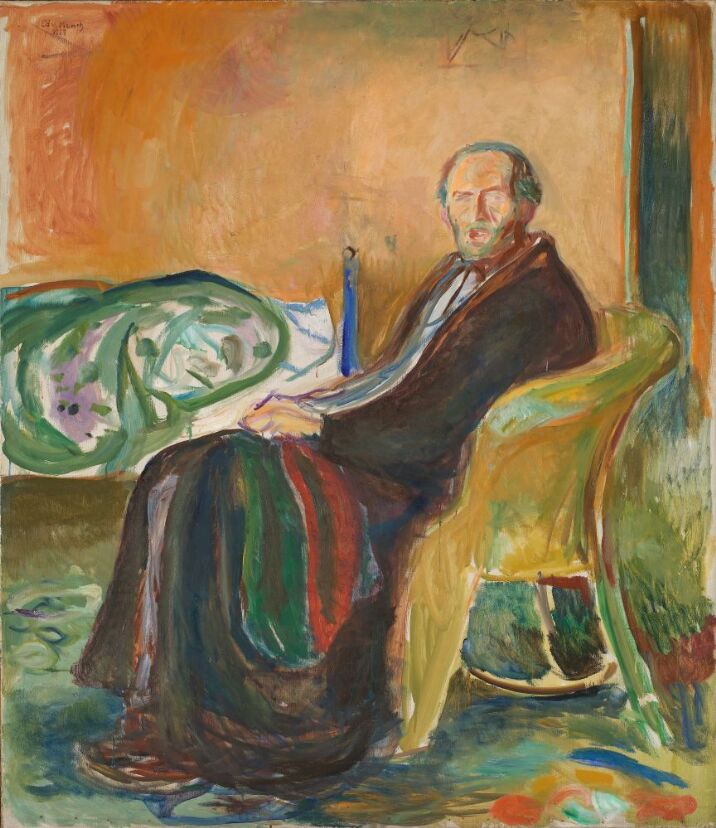
The Spanish flu is one of the only pandemics that we have explicit artistic representations of, and that’s because it affected and even killed some of the world’s most famous artists, such as Edvard Munch, Gustav Klimt, and Egon Schiele.
The Spanish flu was a deadly influenza virus that lasted around fifteen months and infected around a third of the world’s population. It was named the Spanish flu because, to maintain morale during World War I, early reports of the illness were censored by countries like the UK, the US, Germany, and France. In neutral Spain, however, newspapers were free to report on it.
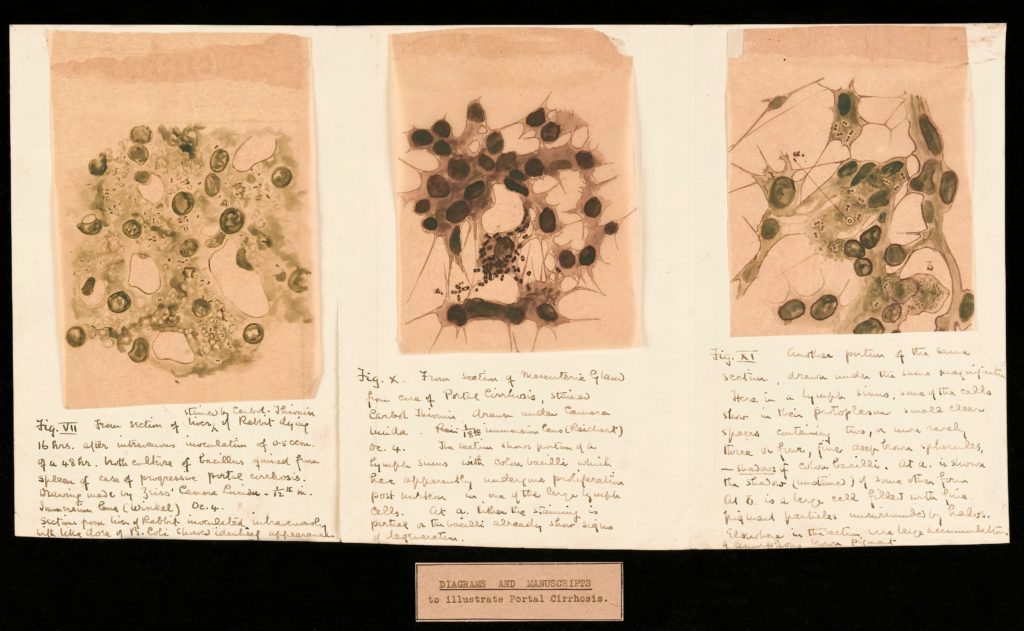
As I mentioned, several well known artists were infected with the virus. Egon Schiele was one of them. He was an Austrian painter, famous for his raw, expressive paintings, particularly his intense and often sexual self portraits.
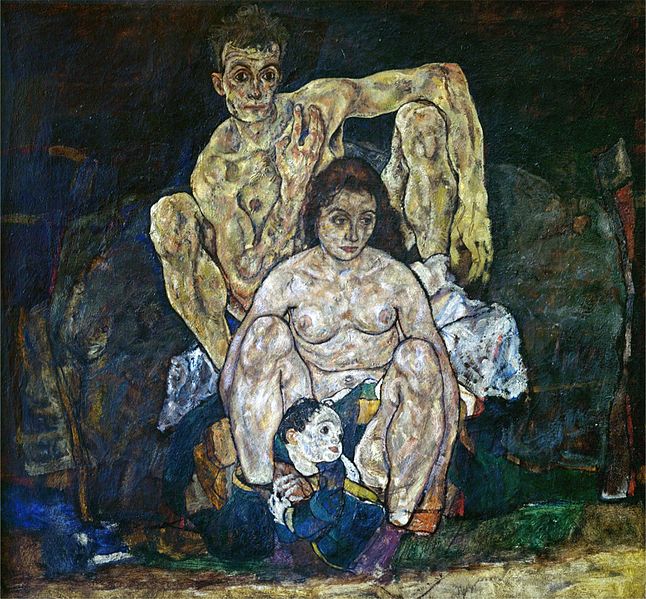
In 1918, Schiele painted the above self portrait of him and his family, featuring his wife, Edith Schiele, and their unborn child. It was never completed. Just a few months later, his wife died of the Spanish flu, never having had the chance to give birth. Egon Schiele drew this striking portrait of her on 28 October 1918, the day before she died:

I find this portrait incredibly emotional. Not only is it a portrait that someone drew of their wife the day before she passed, but Egon Schiele himself died only a couple of days later, on 31 October.
It wasn’t the only portrait that Schiele drew of his loved ones dying of the Spanish flu. A few months earlier he had created the below portrait mourning his mentor, Gustav Klimt, who died in February that year, possibly of the Spanish flu. Klimt was another well known Austrian artist from the Vienna Secession movement. Schiele visited the morgue of Vienna General Hospital the day after Klimt died there to create the portrait.
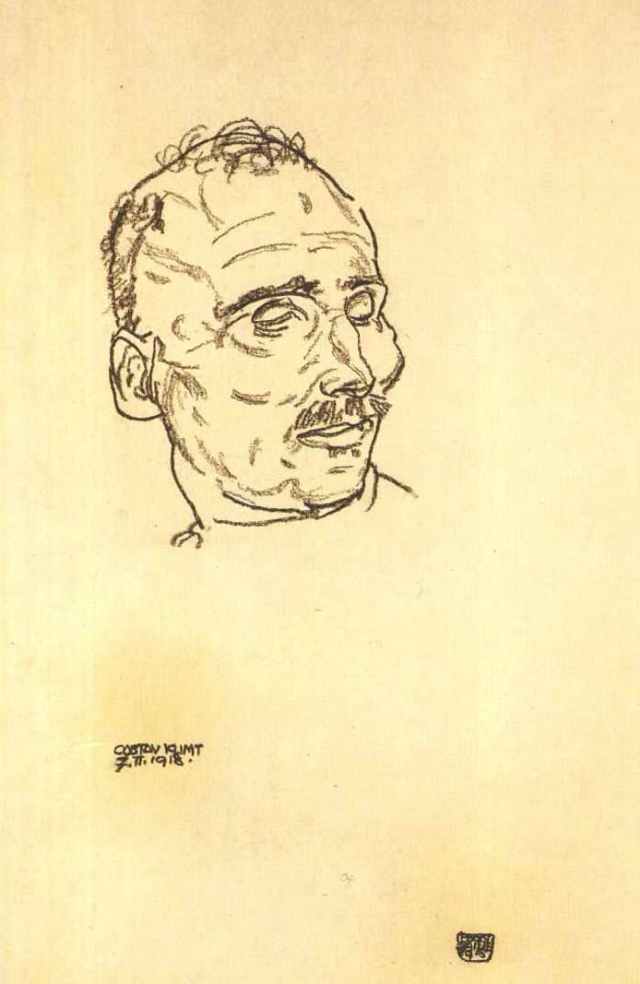
Edvard Munch, who you might know as the artist who painted The Scream, was also stricken with the Spanish flu. He, however, survived. He painted two self portraits of himself: one during his bout with the disease (seen at the top of this section), and one after he had survived it, below.

1981–present: HIV/AIDS global epidemic. Has killed over 32 million people so far.
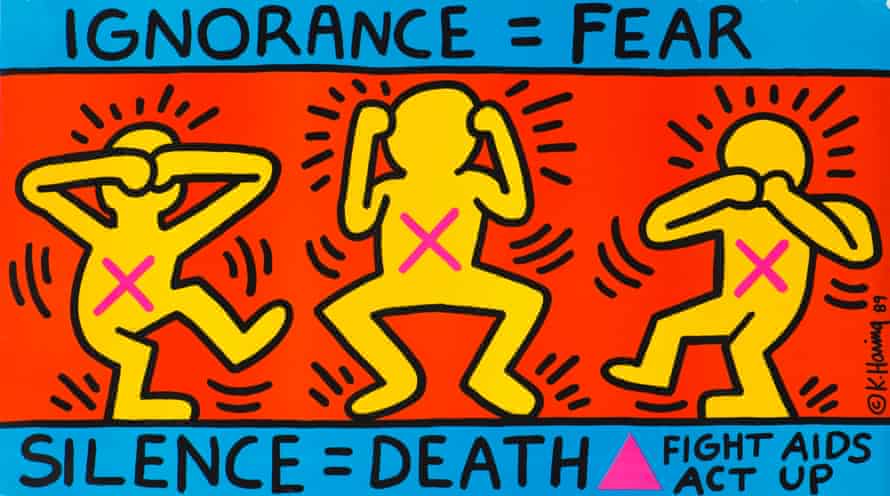
The last outbreak I want to look at is one that is still ongoing: HIV/AIDS. Some consider this a pandemic, while the WHO uses the term “global epidemic” to describe it. The HIV virus probably originated in the 1920s, and AIDS—the disease caused by the HIV virus—was officially recognised in 1981.
What many people might think of as the “HIV/AIDS epidemic” is likely the AIDS crisis in the 1980s United States. At the time, there was no cure for the disease, and thousands of people died. Because it largely affected marginalised LGBTQ+ communities, the disease was heavily stigmatised and famously initially ignored by the government. In response, activists responded by raising awareness, creating care and education centres—and making art.

In 1987, six gay activists in New York formed the Silence = Death Project and designed the above poster for it, using the pink triangle as the logo. The pink triangle was already well established as a pro-gay liberation symbol in the United States at that time. The six men who created the project later joined the protest group ACT UP and offered the logo to the group, with which it remains closely identified.
The “SILENCE = DEATH” slogan, “ACT UP” name, and pink triangle are all used in Keith Haring’s work Ignorance = Fear / Silence = Death (1989) at the top of this section. Keith Haring was a well known American artist who used his art to advocate for HIV/AIDS awareness. The incredibly strong image depicts three figures covering their ears, eyes, and mouth, referring to the silence of a government that was looking the other way.
Haring passed away in 1990 of AIDS-related complications. He wasn’t the only well known artist who passed away from the disease during this time: others include Robert Mapplethorpe, Felix-Gonzales Torres, David Robilliard, Peter Hujar, and Derek Jarman. Multiple beautiful and heartbreaking artworks were created about the crisis. One of my favourites is Untitled (Falling Buffalos) by David Wojnarowicz. The imagery of buffalos falling off a cliff is a metaphor for a generation of AIDS victims falling to their inevitable deaths.
However, while the 1980s AIDS crisis has received the most attention in the West when it comes to awareness of this disease, it’s important to remember that this has always affected the entire world and continues to do so today, with Sub-Saharan Africa currently being the most affected region. Below are a selection of posters from the past few decades created to raise awareness about AIDS in a variety of languages and countries:
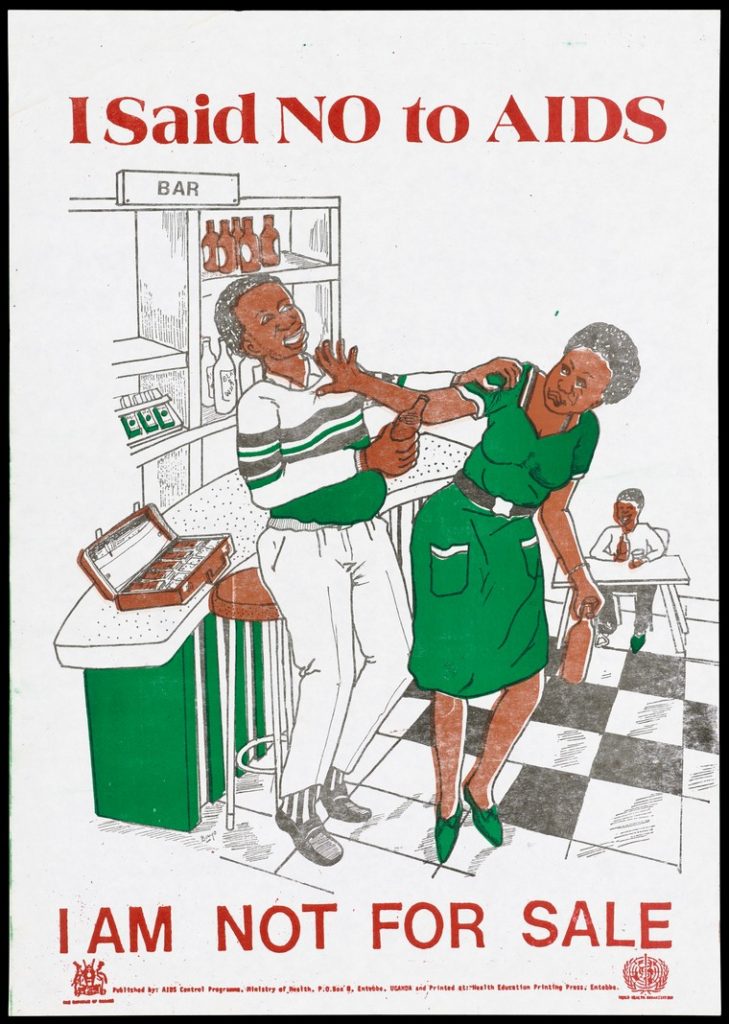

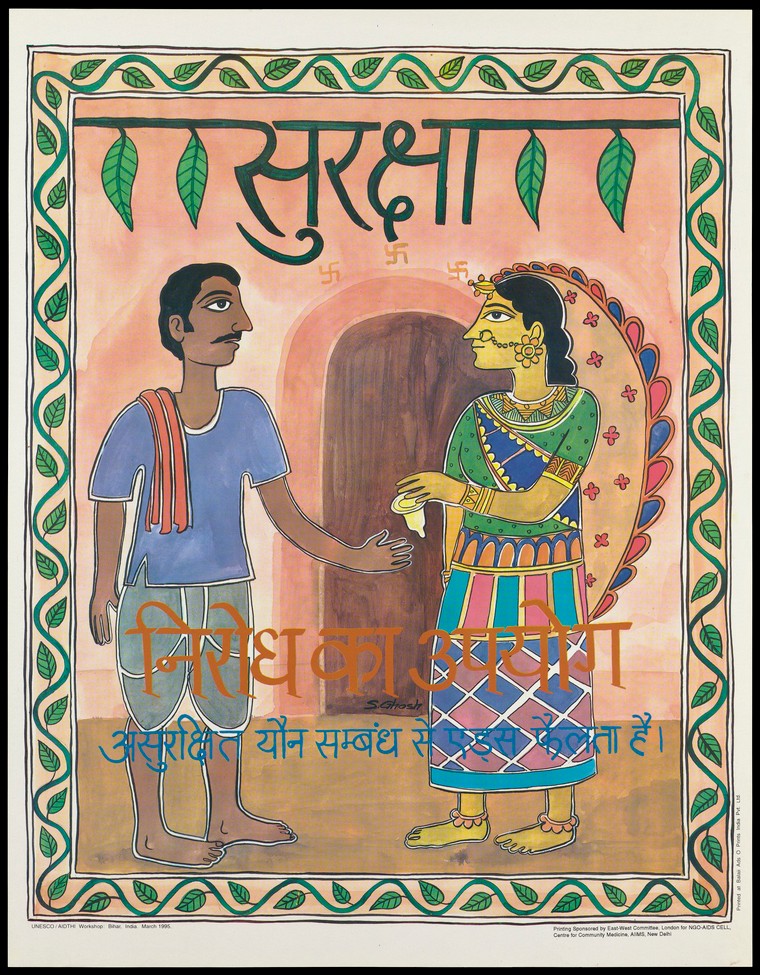
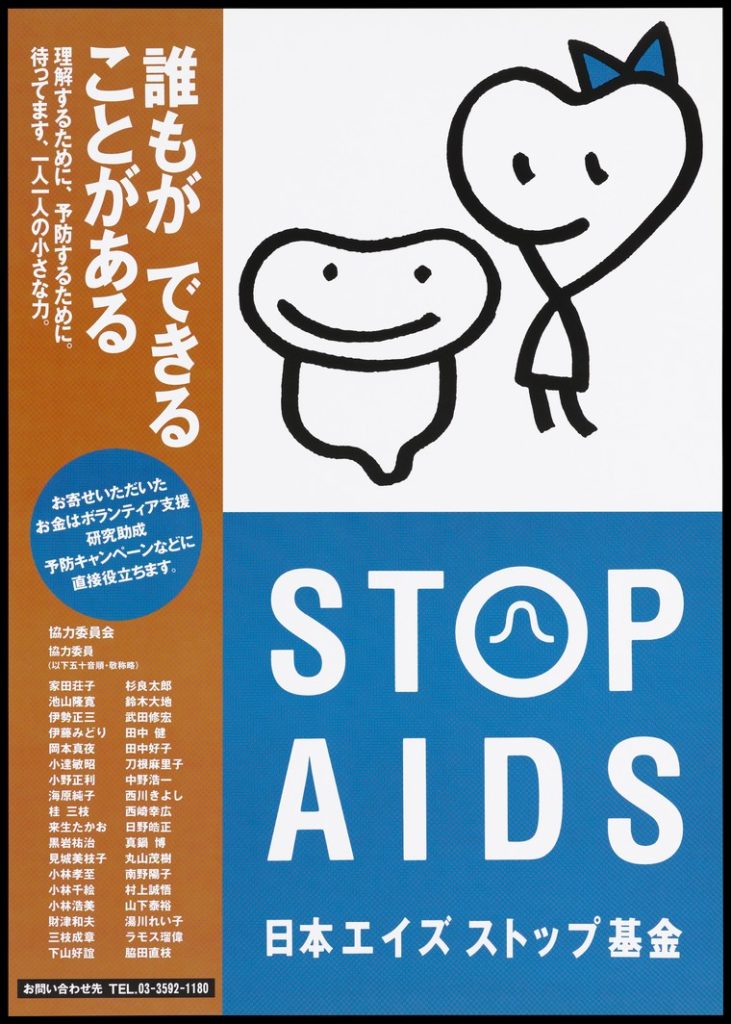
Conclusion
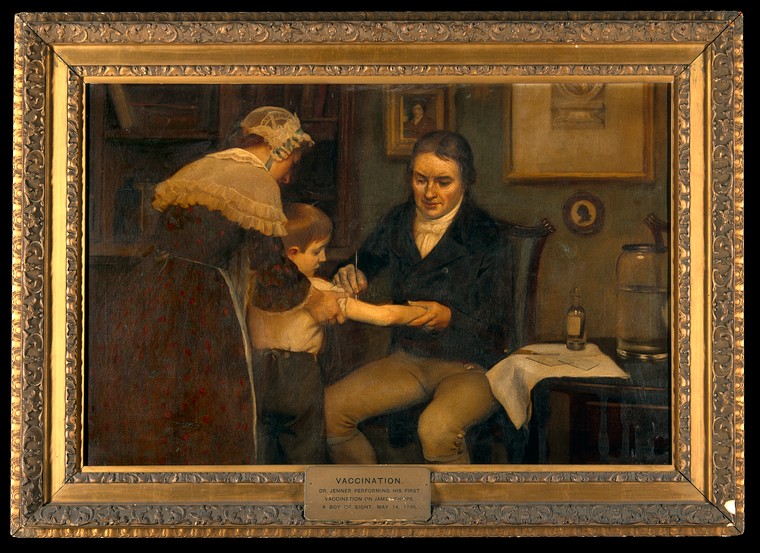
I want to finish with this painting from around 1796. It depicts Dr Edward Jenner performing his first vaccination against smallpox on the young boy James Phipps. Smallpox was the first virus epidemic ended by vaccine. Today, it’s been certified as globally eradicated by the WHO. Looking at all of the countless deaths caused by just this one disease, this image sort of stands out as a glimmer of hope.
Viewing the art in this article from the perspective of a contemporary pandemic, there are themes that many of us can currently relate to: depictions of quarantines and social isolation, hospitalisations, deaths, and loved ones affected by disease. Another unmistakeable trend that comes through is how much worse marginalised communities were affected by these diseases; something that holds true for COVID-19 today.
Especially striking, I think, is the lack of imagery of most of these outbreaks; the idea either that these outbreaks were too dangerous and widespread to properly (or safely) record, or perhaps that they seemed so big and incomprehensible that they were hard to depict or sum up through art. It’ll be interesting to see what kind of images live on from COVID-19, and how it will be remembered in years and decades to come.
I hope that looking back at how people over thousands of years have experienced pandemics makes processing our current situation a little easier and maybe even helps you connect to those histories—it certainly did for me. As always, feel free to let me know any suggestions of other images that depict historical pandemics and I might add them to the post!

Hannah
Thank you for taking the time to present this enlightening article.
keenan julies
Great article!
Craig Michael Mear
I read your article with interest. On the smallpox epidemic in Sydney you write that you could not find any depiction of smallpox from the time. That is incorrect. the drawing you include is indeed of a smallpox victim, a young woman, encountered by an exploring party to Broken Bay. John Hunter accompanied that party and drew the image that you show.
admin
Hi Craig, thanks for this! Would you by any chance have the source that confirms what you write? As I wrote in the article, while I found some online sources referring to it as a depiction of smallpox, I couldn’t find a reliable one.
Sharing the source with me would definitely be much appreciated, as it would be great to confirm that it is indeed a depiction of smallpox!